The Wivenhoe Preservation Trust, Port Action Group, Port Co-ordinating Committee and the Wivenhoe Society
Uproar in Wivenhoe in the early 1980s about the dust and effects of heavy lorries in Wivehoe's narrow streets
Peter Hill
It is hard to remember back to the days when Wivenhoe was under threat from heaving lorries trundling up our narrow streets with their heavy, dusty and sometimes smelly loads. This time was back in the 1980s, and before the development of the nearly 300 houses on the Port site.
The Wivenhoe Preservation Trust was formed when Wivenhoe was facing a planning appeal about the proposal to increase the capacity at Wivenhoe Port Limited, which would mean even more lorries coming through the village.
Background
Wivenhoe was facing a growing destructive force from Wivenhoe Port Limited (WPL) which, in 1981, had bought the former up-stream shipyard from former timber importers, Glicksten’s, who had been using the quay and its marshes for timber storage. WPL, with Mr David Watts as its Managing Director, were entrepreneurs and took advantage of business opportunities as they arose. Various cargoes, which were often dusty, as soya, tapioca, fertiliser, coal and fish meal, were transported up the river from coastal vessels which were able to lay up at the wharf for unloading.
Wivenhoe residents soon began complaining about the effects of the dust which began to cover the whole of lower Wivenhoe, especially on windy days. This was particularly the case If the wind was in the wrong direction and if fishmeal was being unloaded, residents would then also complain about the smell. These cargoes were unloaded by a relatively small crane with a grab bucket that would take the cargo from the ship’s hold and swing it into the waiting lorry. It was thereby vulnerable to be spilt or to the effect of wind. Sometimes it would be stored in a warehouse to be transported at a later date. Cars, boats and properties were soon covered in dust.
The Port Action Group
The Port Action Group was soon formed with a number of concerned residents with people such as Mrs Margaret Dunne, Topsy Jennings and Walter Evans who were willing to put hours of effort in to monitor the number of lorry movements each day, make note of incidents in the High Street and Station Road involving heavy lorries, and reports of dust and smell nuisance. They weren’t the only people who were agitated about the impact that the operations of the Port was having on Wivenhoe. The Wivenhoe Town Council and the committee of the Wivenhoe Society were each discussing what could be done and writing letters to people in authority outside of Wivenhoe.
The Port Co-ordinating Committee
The Port Co-ordinating Committee was created with representatives of the Port Action Group Wivenhoe Society, Wivenhoe Town Council and Wivenhoe Sailing Club with the purpose of determining what action could be taken to ensure Wivenhoe Port Ltd operated without detriment to the people and property of Wivenhoe.
Chelmer Cargo Ltd
Wivenhoe Port Ltd wasn’t the only operator bringing heavy lorries to the Port. At the same time that Wivenhoe Port Ltd bought the Port site, Chelmer Cargo Ltd, freight forwarding agents, had bought the small marine engineering firm, Whitehead Harbourmaster which were based on the Port site. They too began to build their business and soon submitted two plans for a new warehouse, one of which stood 52 feet high and one of a lesser height.
Before either of Chelmer Cargo’s and Wivenhoe Port’s planning applications were considered by the CBC Planning Committee, Wivenhoe Town Council invited the MDs of both companies to present their reasons in support of their respective applications at a public meeting held in the Wm Loveless Hall. To a packed meeting, residents heard both MDs suggest that neither application would increase the number of lorries on Wivenhoe’s roads. Of course, neither men were believed. Although the meeting was cordial, Wivenhoe knew what they were up against.
Faced with two planning applications, whilst the Colchester Borough Council Planning Committee rejected them both and, at a Public Inquiry held on 1st February 1983, the Inspector allowed the application for the smaller warehouse.
Planning Applications for new Warehouses from Wivenhoe Port Ltd
In 1982, Wivenhoe Port Ltd also submitted two planning applications. One for a warehouse on the West Street side of its site where cargoes were being unloaded from coastal vessels and the other for a bulk grain storage building on the saltings.
Colchester Borough Council turned down these two planning applications, supported by strong argument put forward by Wivenhoe. When however Wivenhoe Port Ltd went to appeal, despite lots of statistics which had been prepared by the Port Action Group, the barrister acting for Wivenhoe Port Ltd managed to persuade the Inspector that the new warehouse would not lead to any more lorries on Wivenhoe’s roads. So despite all of this opposition, Colchester Borough Council and Wivenhoe lost their arguments and the number of lorries continued to grow to intolerable numbers.
The Coal Strike of 1984
It was inevitable that Wivenhoe Port Ltd would want to take advantage of the Coal Strike in 1984 to bring coal into the country by water from such places as Poland.
That year, Wivenhoe experienced flying pickets, as they were called, who tried to stop Wivenhoe Port Limited employing haulage contractors collecting coal for delivery on large lorries to various destinations in the UK. This meant hearing and seeing more lorries than ever in a successive stream trundling up along Wivenhoe’s narrow streets, and experiencing the trail of coal dust which inevitably followed in their wake. Click here for pictures of the Miners in Wivenhoe.
Many people will remember too the great piles of coal heaped up against the high brick wall which ran down West Street and visible to everyone who went down that road. Houses in West street and cars parked at the Station or anywhere else seemed to get covered with a film of coal dust. This caked into a nasty slime when soya and other dusty cargoes were being unloaded too.
Planning Applications and Colchester Borough Council
Colchester Borough Council seemed powerless to do anything to save Wivenhoe and its residents, and appeals to the Chief Environmental Health Officer had no impact either.
The Planning Committee did at least refuse two earlier planning applications by Wivenhoe Port Ltd which had immediately appealed to the Planning Inspector against these decisions and won. Now Wivenhoe was faced with three further planing applications. This time for the open storage of loose bulk commodities on the saltings, failure of CBC to determine the erection of an administration building and failure to permit screening drapes at their warehouses in West Street and Bath Street.
On 10th December 1984, CBC wrote to us formally to say Wivenhoe Port Ltd had appealed on all three applications and the Inspector was going to hear the Appeal in January 1985.
It seemed to us that we needed professional help if we were going to save Wivenhoe from what seemed inevitable destruction.
Wivenhoe Preservation Trust established to employ a barrister
The Wivenhoe Preservation Trust was established in Len Horner’s living room in Whitton Lodge in 1984 as a vehicle to appoint and apprise a barrister to represent Wivenhoe at the forthcoming Appeal. No-one in Wivenhoe had great confidence in the Borough Council to win at an Appeal since they did not have the passion that we in Wivenhoe had and for good reason, they weren’t the ones who were suffering. The founders of the Trust were Len Horner (Chairman, Wivenhoe Society), Cllr Austin Baines (Wivenhoe Society and Wivenhoe Town Council), Nicholas Butler (Wivenhoe Society) and Cllr Glyn Davies and Cllr Peter Hill (both representing Wivenhoe Town Council). Cllr Glyn Davis was appointed Chairman of the Trust.
The Save Wivenhoe Campaign
In November 1984 the Wivenhoe Society launched a Save Wivenhoe campaign to the raise money for the Wivenhoe Preservation Trust to employ a barrister to represent Wivenhoe at the Planning Appeal against further development of Wivenhoe Port Ltd and its operations which, it was feared, would increase the number of heavy lorries dramatically. Len Horner, then Chairman of the Wivenhoe Society, signed the appeal letter – see picture of the Appeal letter opposite that was distributed to every household in Wivenhoe. The Appeal raised over £5,800.
The Planning Inquiry took place in Wivenhoe on Tuesday 15th January 1985
Our first success was persuading the Planning Inspector to hold his three-day Inquiry in the William Loveless Hall. The Hall was packed every day. (See letter distributed widely throughout Wivenhoe with details of the Inquiry appended at the end of this page.) We called some 20 official witnesses who each dealt with a particular aspect of the problems created by Wivenhoe Port’s operations. Tony Peel, the barrister whom we had appointed, did a great job for Wivenhoe. He had copies of each of the submissions prepared by our witnesses and was well prepared with a detailed brief which we had all put together. Wivenhoe Port Ltd did themselves no favours by not cancelling all lorry movements for those three days, since they constantly interrupted the proceedings of the Inquiry by slowly grinding their way up the High Street outside the windows of the William Loveless Hall and in full view of the Inspector.
The Planning Inspector agrees with Wivenhoe
He said: Notwithstanding the fact that the volume of traffic on the B1028 is shown to be within its theoretical capacity one only has to spend a few days in the town to realise the adverse impact of the traffic, and especially the heavy goods vehicles, on life in the town as a result of the danger to other road users, the noise and the vibration and the dust and the dirt.
He went on to say that no further development of the Port’s operations should be permitted. See the Inspector’s full report in the first Wivenhoe Preservation Trust newsletter which is appended at the bottom of this page.
The first Annual Meeting of the Wivenhoe Preservation Trust
The Trust’s first annual meeting was held on 26th November 1985. Although 156 people had signed up as members of the Wivenhoe Preservation Trust, with several signing a monthly standing order, only a few people attended and the meeting had to be adjourned for two weeks because of a lack of a quorum. The second meeting which was held on Tuesday 14th January 1986 confirmed Cllr Glyn Davies as Chairman, Cllr Peter Hill as Vice-Chairman, Len Horner as Treasurer and Nick Butler as Hon Secretary. The meeting noted that the appointment of a barrister with the necessary solicitor (Mr. Julian Wilson of Thompson Smith & Puxon) had cost £4,830 and all agreed it had been money well spent. We also agreed that the Wivenhoe Preservation Trust had been a useful vehicle and might have another beneficial purpose in the future.
A draft constitution had been worked on by Stephen Williams who had worked with us on it until he left Wivenhoe and moved to Suffolk in mid-1985. It was considered at this AGM. The overall objective for the Wivenhoe Preservation Trust was to improve and protect for the benefit of the public the countryside and amenities of the Parish of Wivenhoe in the County of Essex. One of the key sub-objects was to make representations at public enquiries or in such other ways as shall from time to time appear necessary.
I was mandated to have dealings with the Charity Commission about the Trust becoming a registered charity. They seemed amenable at first until they focussed on the significance of this sub-object. The person we were dealing with at the Charity Commission pointed out that lobbying and activities of a political nature weren’t charitable. We didn’t pursue charitable status after this.
A Constitution for the Wivenhoe Preservation Trust was finally agreed in 1986 when the founding trustees, Glyn Davies, Peter Hill, Len Horner and Nick Butler, all signed it.
Regrettably Glyn Davies and his wife left Wivenhoe later in 1986. In his place Cllr Austin Baines was elected Chairman, who was then succeeded by Cllr Peter Hill.
Another Planning Appeal in 1988
On 29th January 1988 Wivenhoe Port Ltd lodged two planning applications. One to extend the wharf to take another ship and another to build 375 houses on their site. Once again CBC refused them and Wivenhoe Port Ltd lodged Appeals.
At a meeting of the Preservation Trust on 30th August 1988 attended by Nick Butler, Len Horner, Major Geoffrey Plunkett and Cllr Peter Hill, and with only £1,367 in the bank, we pledged £1,000 to Wivenhoe Town Council towards legal representation. These two planning applications had split Wivenhoe. No-one wanted the Port to expand, and neither did anyone want the 325 extra houses when there were only some 220 houses below the railway line. There seemed little point trying to argue the case at an Appeal for something we couldn’t agree about.
I wrote to the Planning Inspector as I had been Town Mayor when these applications were lodged. Many other residents and committees expressing their views to the Inspector too. See the copy of the letter I sent the Inspector setting out Wivenhoe’s arguments against both planning applications appended at the end of this page,
In the end, the Inspector made the decision for us. He agreed that the dirt, noise and dust had reached intolerable levels and granted the outline planning consent for the houses. Mind you, this was only outline consent. There were lots of debates, meetings and discussions by Wivenhoe Town Council and others as the Wivenhoe Society before planning consent was actually given and then for a much lesser number than 325 houses. See a copy of the Inspector’s Report appended at the end of this page.
Cooks Shipyard in 2001
Finally, after many years of Cooks Shipyard being derelict, Lexden Restorations with Jonathan Frank at the helm bought the site and set about getting approval for around 90 homes on it. He faced opposition from the Wivenhoe Shipyard Group who wanted it to remain a disused industrial site, and from local residents who were extremely worried about the impact of cars from new residents wanting to get to and from this site.
In November 2001 we were approached by the Wivenhoe Shipyard Group and asked if there were still funds in our kitty and whether we would consider helping to fund their costs into this development at Cooks Shipyard. We also had a similar request from the Anglesea Road Residents’ Association. Len Horner, Austin Baines and I agreed a donation of £250 to the Shipyard Group and £100 for the Anglesea Road Residents’ Association (ARRA). We had a very nice letter back from its Chairman, Iain Ward, thanking us for our donation.
Winding up Wivenhoe Preservation Trust
We kept the Preservation Trust going until 2014, thirty years after it was formed, in case there was going to be another planning appeal which the remaining funds could be usefully used for. The balance in the account had grown to £1,879.60 by then. With no other useful purpose to consider, Len Horner, Austin Baines and I agreed to give the remaining funds to help establish a Community Archive in which to record and make information, documents and photographs public by means of a web site for which the newly established Wivenhoe History Group was raising money.
Some final thoughts about Wivenhoe Port Ltd
They weren’t all bad. The crews from the ships used the local shops and occasionally the pubs, and stocked up the provisions on board from local businesses as Barton’s Stores. And when the road between the University and the top end of Wivenhoe became closed due to snow overnight causing a massive snow drift which prevented anyone from getting in or out of Wivenhoe, it was a JCB digger from the Port which worked all morning to clear a way through the snow.
It also meant that I got to know David Watts quite well which was helpful when he wanted to sell his interest in Wivenhoe Town Football Club in 1994. Although the negotiations were protracted and at times very difficult, when it came to the final negotiation which took place in the dining room of my home, it was concluded over a drink. But that is all another story. Click here to find out about how Wivenhoe got a sports ground and how the Wivenhoe & District Sporting Facilities Trust was founded.
Peter Hill
Click on the links below to see some of the important documentation of that difficult time in Wivenhoe’s recent history. The pdfs open in a new page.

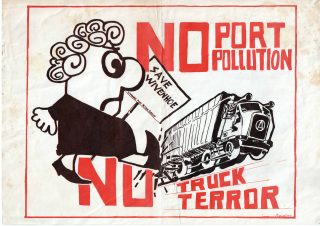
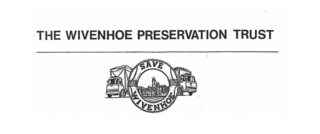

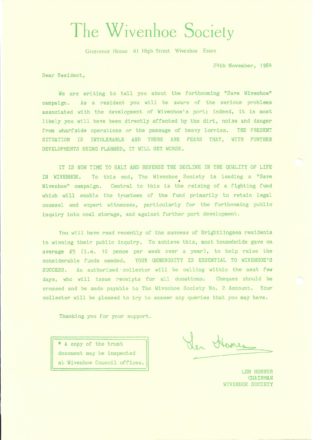
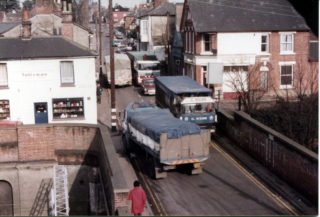
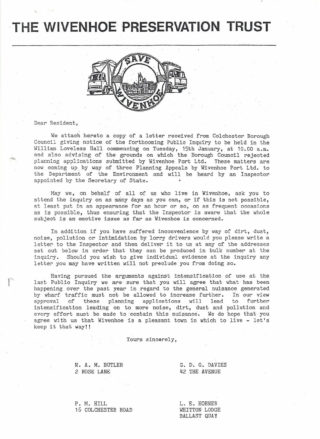
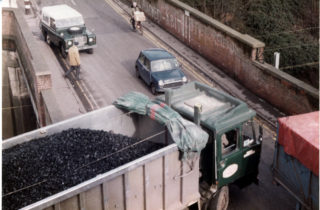





No Comments
Add a comment about this page